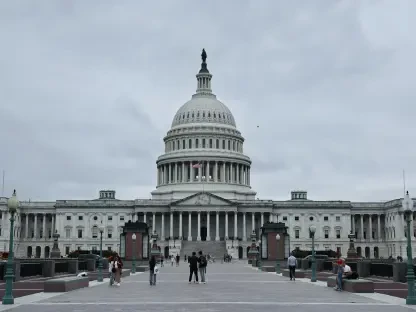Economic uncertainties and recent tariffs announced by President Trump have had a significant impact on employee confidence within the U.S. workforce, as detailed by the latest data from Glassdoor, which indicates that employee confidence saw a slight increase in March. Climbing from a record low in February, confidence rose from 44.7% to 45.2%. Glassdoor defines this percentage as the share of workers who maintain a positive six-month business outlook. Despite this marginal improvement, there remains significant apprehension among employees, primarily due to lingering concerns over tariffs, federal funding cuts, layoffs, and overall business stability.
Divergent Employee Sentiment
The recent data highlights a profound decline in confidence among entry-level workers, now at an unprecedented low of 43.4%. This is the lowest level recorded since Glassdoor began collecting this data in April 2016. The trends indicate a pervasive sense of economic instability influencing employee sentiment across various sectors. The sharp drop in confidence among these workers raises questions about the broader implications for job market stability and entry-level opportunities.
The malaise affecting entry-level workers is reflective of wider challenges. The fluctuations in economic policy and ongoing uncertainties continue to stoke fear among younger and less experienced employees who are often the first to feel the impact of economic downturns. Trust in sustained business growth and job security remains fragile, and unless there is a significant improvement in economic signals, the confidence levels among these workers are unlikely to see a meaningful rebound soon.
Impact on Specific Industries
A closer look at the data reveals that certain industries have been harder hit, particularly those like aerospace and defense, government, public administration, and nonprofit organizations. These sectors experienced sharp drops in employee confidence due to severe impacts from layoffs and federal funding cuts. The ripple effect of these measures has led to a heightened state of anxiety within these workforces, further exacerbating the general sense of instability.
Additional industries such as manufacturing; energy, mining, and utilities; and construction, repair, and maintenance services reported significant declines in worker confidence year-over-year. These sectors, heavily reliant on global supply chains and vulnerable to trade policy shifts, have felt the brunt of the “trade policy whiplash”. Such volatility has rendered businesses and their employees apprehensive, uncertain about future operations and job security, with the looming threat of further financial ramifications hanging over their heads.
Broader Economic Concerns
Despite the latest data from the U.S. Bureau of Labor Statistics indicating a steady job market, sentiment among employers remains cautious. An executive from ManpowerGroup noted that employers are exhibiting caution across nearly all industries. The potential move towards reductions in force remains a realistic outcome if the current economic uncertainty persists, mirroring the recent turbulence within the stock market.
Moreover, this caution is not just limited to potential layoffs. Many businesses are adopting a wait-and-see approach when it comes to expansions, new hires, and even routine operations. This climate of uncertainty could have longer-term effects on the overall economy, stymieing growth and innovation. If businesses continue to operate in a protective mode due to fear of instability, the repercussions could extend well beyond just immediate employee confidence, impacting the broader economic landscape.
Moving Forward in Uncertain Times
Economic uncertainties and the recent tariffs announced by President Trump have significantly impacted employee confidence within the U.S. workforce, according to the latest data from Glassdoor. The data shows a slight increase in employee confidence in March, rising from a record low in February, climbing from 44.7% to 45.2%. This percentage is defined by Glassdoor as the share of workers who maintain a positive six-month business outlook. Despite this marginal improvement, there is still significant apprehension among employees, primarily due to concerns over tariffs, federal funding cuts, potential layoffs, and overall business stability. These factors contribute to a cautious outlook among many workers, who remain worried about their job security and the future of their companies. As external economic challenges persist, the overall mood within the workforce reflects a mix of cautious optimism and lingering uncertainty.









